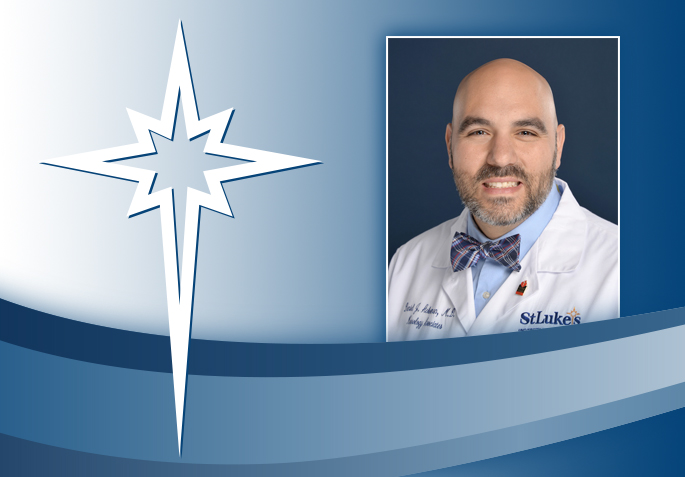Blog

iSchemaView RAPID™ Imaging Platform Helps Give Stroke Patients Precious Time.
June 27, 2018 - St. Luke’s University Health Network has introduced new software, iSchemaView RAPID™, to generate maps of damaged brain tissue to help determine treatment options, regardless of how much time has passed since the stroke occurred. The technology promises to dramatically improve recovery for a significant portion of stroke patients.
“Time is Brain” refers to the fact that time is a crucial element of stroke outcome and the presence or absence of it, can mean the difference between saving vital brain tissue or losing it. In the past, six hours was the industry standard for how long doctors had from onset of symptoms to treat a patient with thrombectomy, a procedure to remove the clot in the brain and restore blood-flow. However, if the stroke occurred more the six hours from the time of treatment, thrombectomy would no longer be an option because it could cause more harm than good.
Now, the iSchemaView RAPID™ Imaging Platform software works with CT perfusion scans to produce clear images of the brain and evaluate blood flow in patients who have had an acute ischemic stroke. By comparing flow in different parts of the brain, doctors can select those patients who will most benefit from thrombectomy, even if it’s up to 24 hours from the onset of stroke.
A person dies from stroke every four minutes in this country, with stroke contributing to up to one in five deaths. Ischemic strokes, the type of strokes that the software is indicated for, is the most common type, affecting nearly 800,000 people in the United States every year.
Dr. Daniel Ackerman, director of Stroke and Vascular Neurology, St. Luke’s University Health Network, has seen a major shift in care because of the availability of this software.
“Before this software was available, CT perfusion was labor intensive and time consuming and our best evidence allowed us to treat patients with a large blood clot up to six hours from the time their symptoms started,” explains Dr. Ackerman. “The new software allows us to treat selected patients up to 24 hours from the time their stroke symptoms start. By quickly and accurately identifying where there are issues with blood flow, which tissue is damaged and which is repairable, the software helps clinicians identify whether or not the window of opportunity to treat the stroke is still feasible then interventionalists can go after the clot.”
iSchemaView RAPID™ Imaging Platform is available at St. Luke’s Comprehensive Stroke Center at the Bethlehem Campus. Seven of the hospitals in the Network are designated as Primary Stroke Centers. The St. Luke’s Comprehensive Stroke Center in Bethlehem and the Primary Stroke Center in Allentown were recently recognized for both speed and consistent excellence in stroke care with the highest possible honor from the American Stroke Association for the second year running.
“The application of this technology represents the next chapter in St. Luke’s commitment to provide cutting edge stroke care,” says Dr. Ackerman. “The addition of CT-Perfusion and iSchemaView RAPID™ to our stroke arsenal gives us the tools to offer immediate treatment to far more people, helping them to recover as quickly and completely as possible.”
Media Contact:
Sam Kennedy, Corporate Communications Director, 484-526-4134, samuel.kennedy@sluhn.org
About St. Luke’s
Founded in 1872, St. Luke’s University Health Network (SLUHN) is a fully integrated, regional, non-profit network of 14,000 employees providing services at 10 hospitals and over 300 outpatient sites. With annual net revenue of $1.9 billion, the Network’s service area includes 10 counties: Lehigh, Northampton, Berks, Bucks, Carbon, Montgomery, Monroe and Schuylkill counties in Pennsylvania and Warren and Hunterdon counties in New Jersey. Dedicated to advancing medical education, St. Luke’s is the preeminent teaching hospital in central-eastern Pennsylvania. In partnership with Temple University, St. Luke’s created the region’s first and only regional medical school campus. It also operates the nation’s longest continuously operating School of Nursing, established in 1884, and 28 fully accredited graduate medical educational programs with 226 residents and fellows. St. Luke’s is the only health care system in central-eastern Pennsylvania to earn Medicare’s five-star rating (the highest) for quality, efficiency and patient satisfaction. St. Luke’s has earned the 100 Top Major Teaching Hospital designation from IBM Watson Health (formerly Truven Health Analytics) repeatedly – six times total and four years in a row including 2018. It has also been cited by IBM Watson Health as a 50 Top Cardiovascular Program. Utilizing the EPIC electronic medical record (EMR) system for both inpatient and outpatient services, the Network is a multi-year recipient of the Most Wired award recognizing the breadth of the SLUHN’s information technology applications such as telehealth, online scheduling and online pricing information. St. Luke’s is also recognized as one of the state’s lowest cost providers.



